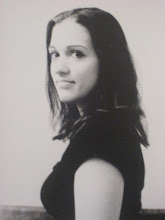
– Author Unknown
I am always excited to see dancing incorporated with music in different cultures. Besides acting as a means of communal bonding, it adds another dimension to the musical experience. Watching a good deal of classical ballet over the years has helped me appreciate the power of non-verbal communication. One may express an abundance of ideas and emotions, sometimes even those that words cannot describe.
Some may say that music and movement are not always mutually dependent—that dance can act as a purely visual art form, and music can be played exclusively—but I do not think that this is a natural condition. After all, as a simple matter of physics, music in the physical sense cannot happen without movement.
Dance, too, can act as a form of music in itself. Here is an example, shown through Irish step dance:
http://www.youtube.com/watch?v=W22gpBv00gg
Movement seems to be guided innately by some form of rhythm. It is very rare that one listens to music without being inspired to move in some way, be it tapping, swaying, or dancing. It does not even have to be outwardly physical—you need only think, and your mind is engaged in activity.
In my own experience, I tend to be involved in the latter, more inward form. There are many types of music—Irish, Indian, Spanish, swing—that almost instinctively inspire me to dance, but for the most part these genres I appreciate in the more subdued manner. Of course, if I were given the opportunity to learn and practice these dances, I would not hesitate, but then there is that implication that there are “appropriate” places to outwardly express music in dance form. It is always interesting when I learn about other cultures where there are different expectations and levels of expression.

No comments:
Post a Comment